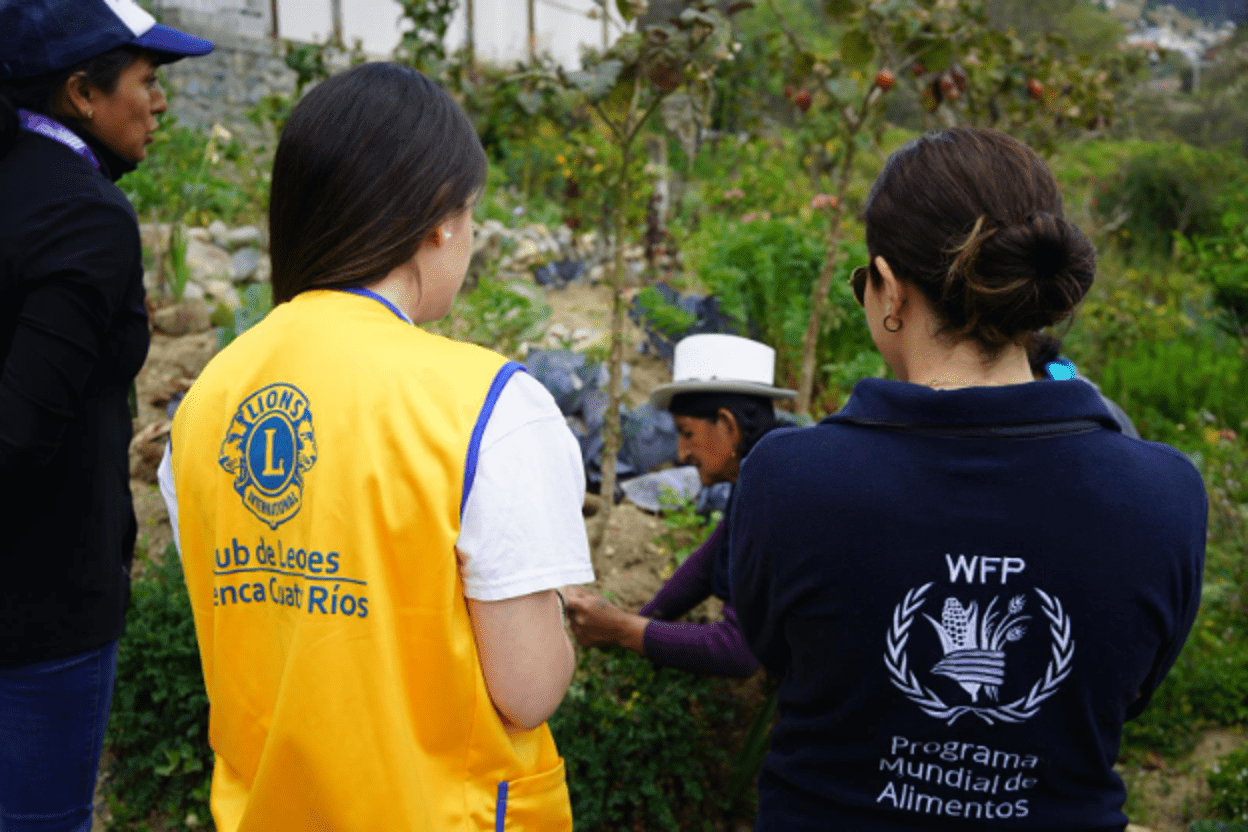
Thousands of students in 23 countries submitted their artwork. Samie was one of a handful of winners.
“Every student has a different vision of a world of plenty — from bountiful harvests and trees laden with fruit, to rivers full of fish. Many of the boys and girls dream about becoming doctors, teachers and lawyers one day, but for now they talk about sharing whatever food they have with others and using their designs to depict a healthier tomorrow,” says WFP staffer Cristina Ascone, who launched the competition and helped judge entries from 115 finalists at the agency’s headquarters in Rome.

By easing the burden of putting food on the table, school meals encourage parents to keep children in the classroom, especially girls like Raida Kasim Esmael, a 12-year-old from the Philippines.
Like Samie, Raida wants to be a doctor when she grows up. Her plan is to open a clinic for the poor in her community.
Thanks to WFP, Raida has the right nutrition to stay focused in the classroom and fulfill her dreams, breaking the cycle of poverty and hunger that has trapped her family for generations. Raida’s winning artwork shows Planet Earth sitting on top of a healthy tree surrounded by smiling children with school meals of rice and beans. A cheerful sun promises a good harvest.
14-year-old Thevathayaparan Arththikan in Sri Lanka believes that when everyone in the world has enough food to eat, the word “hungry” will simply disappear. His picture shows fresh fish, fruit and vegetables being delivered from a healthy mother Earth.

As each of these drawings illustrates, food — like art — is a universal language that spans geographic and cultural boundaries. Food is humanity’s common denominator and the most basic building block. By providing good nutrition and promoting education, WFP’s school meals empower the next generation with the most basic tools for success. Studies have shown that school meals consistently boost enrollment, attendance and graduation rates.
Supporting school meals is one of the smartest investments the world can make for its collective future. WFP estimates that every dollar spent on school meals yields $3 to $8 in economic returns.
School meals are also one of the most affordable investments. For just 25 cents, WFP can deliver a nutritious meal to a child like 11-year old Oumar Karembe from Mali (below).


Oumar hopes to be a school principal one day. “My drawing represents a hungry person who transforms himself into a bird, and flies away to find food. To end hunger in Mali, we should work the land together,” he wrote in his winning submission.
Along with bragging rights, each winner received a cash prize. Their schools will also receive funding from WFP to spend on new supplies. The finalists’ artwork, meanwhile, is currently on display at WFP’s headquarters in Rome, reminding staffers and visitors alike about the creativity and potential that school meals can unlock for children in need.
A hunger-free future isn’t just a flight of the imagination. Over the past 25 years, thanks in part to WFP’s efforts, the number of undernourished people across the globe has dropped by 216 million.
We are closer than ever before to realizing these children’s visions of world without hunger.





